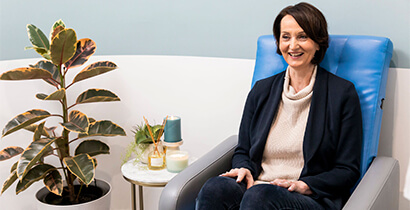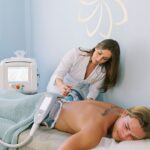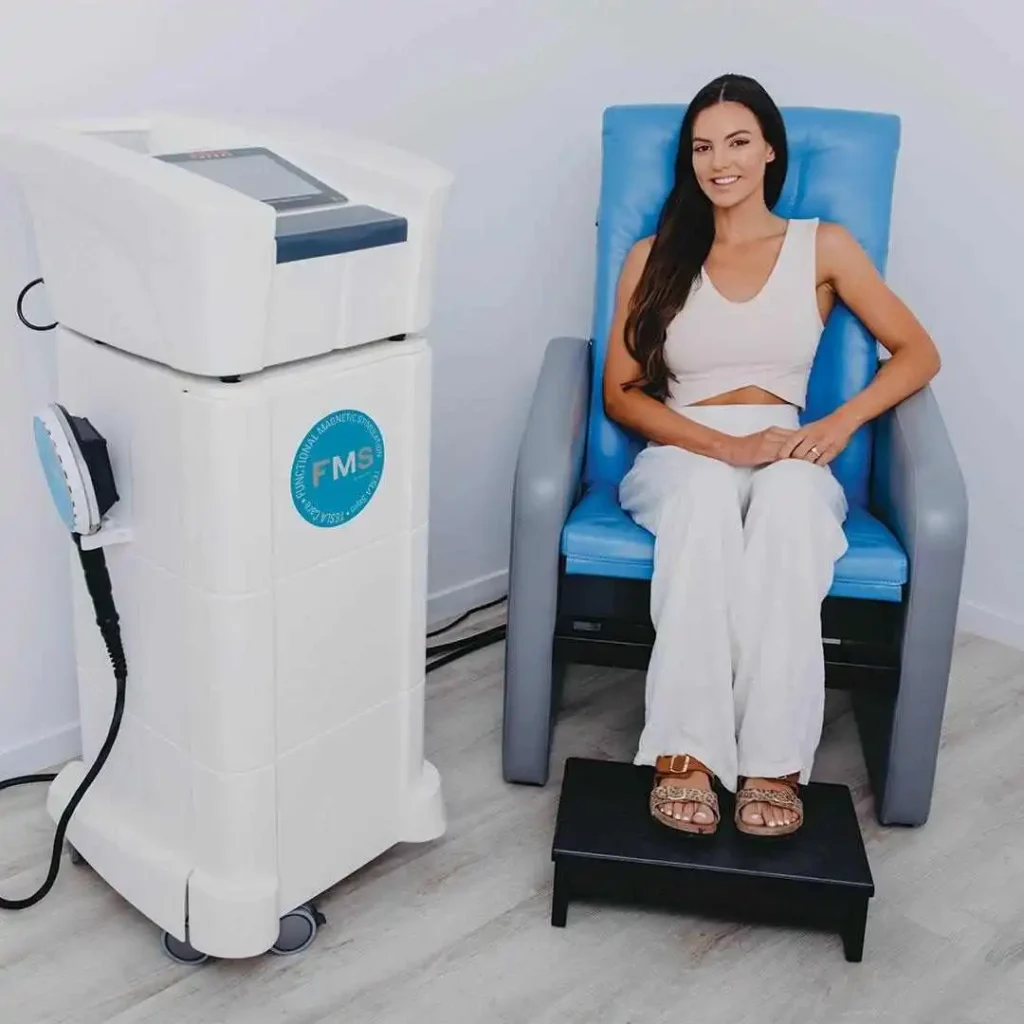
Can You Help Me Strengthen Pelvic Floor Muscles?

Can you help me strengthen my pelvic floor?
The answer is yes.
Ok, Ladies and Gents, listen up. We’re going to talk about a very sensitive subject …. Incontinence.
Kegel exercises strengthen the pelvic floor muscles, which are crucial for preventing incontinence.
What are pelvic floor muscles?
Pelvic floor muscles are a crucial group of muscles that form the base of your pelvis, providing essential support to your pelvic organs, including the bladder, uterus, and bowel. These muscles play a vital role in maintaining bladder and bowel control, as well as supporting the pelvic organs during physical activities. The pelvic floor muscles are composed of three layers: the superficial layer, the deep layer, and the pelvic diaphragm. The superficial layer includes muscles surrounding the anus and vagina, while the deep layer supports the bladder and uterus. The pelvic diaphragm, a dome-shaped muscle, separates the pelvic cavity from the abdominal cavity, ensuring everything stays in place.
Why are pelvic floor exercises important?
Pelvic floor exercises are essential for maintaining good bladder and bowel control and supporting your pelvic organs during physical activities. Weak pelvic floor muscles can lead to various issues, including urinary incontinence, pelvic organ prolapse, and sexual dysfunction. By regularly performing pelvic floor exercises, you can strengthen these muscles, improving bladder and bowel control and reducing the risk of pelvic organ prolapse. Additionally, these exercises can enhance sexual function and decrease the likelihood of stress incontinence, making them a vital part of your overall health routine.
Pelvic floor muscle training for women
Ladies, you’re up first.
Did you know that between one-third and one-quarter of women who’ve had a baby lose bladder control? It’s far more common than you might think, and the good news is that it can be treated effectively and discreetly without the need for surgery, with pelvic floor strengthening treatments. Pelvic floor muscle training is essential for women who have had a baby to regain bladder control and support pelvic organs.
And that’s good news because any new Mum will tell you that having a baby changes life enough without adding the additional stress or downtime that can be associated with surgical medical procedures.
If you come in for pelvic floor strengthening at Body Catalyst, we’ll ask you to sit back … and relax. Bring a book. Hook yourself up to your Netflix account. Or simply scroll social.

The TeslaChair is a breakthrough treatment that uses Functional Magnetic Stimulation (FMS) technology to stimulate muscle contractions to the pelvic floor, strengthening and toning muscles: no weird exercises or kegel balls.
While kegel balls can help strengthen the pelvic floor, they’re unsuitable for everyone. The TeslaChair, on the other hand, is safe and effective.
And, as the name suggests, you sit and let the chair do all the work!
The goal is to rehabilitate weak pelvic floor muscles and restore control without causing any discomfort. Studies have shown that more than 90% of patients who’ve used this or a similar type of treatment report an improvement in their quality of life.
At Body Catalyst, we’re committed to empowering your well-being so you can live your best life. This includes your sexual health! So, ladies, if you’re having trouble achieving orgasms, the TeslaChair can help with this, too.
Kegel exercises for men
Now, men. We know incontinence affects you too. And you’re even less likely to talk about it than women. But here is the good news! The TeslaChair can also assist you in strengthening your pelvic floor muscle to improve bladder control.
Urinary incontinence affects up to 10% of Australian men and up to 38% of Australian women. And 70% of people with urinary leakage do not seek advice and treatment for their problem.
There are many reasons for this, many utterly understandable because this is not always an easy subject to talk about. But there is no need for you to suffer in silence.
Our team is knowledgeable and experienced, and we know this is a sensitive subject. We’re here to answer any questions you might have, honestly and openly.
How to perform pelvic floor exercises
Performing pelvic floor exercises is straightforward once you identify the correct muscles to contract. Here’s a step-by-step guide to help you get started:
- Find a comfortable and quiet place to practice your pelvic floor exercises.
- Identify the correct muscles to contract: these are the pelvic floor muscles that support your bladder, uterus, and bowel.
- Contract the pelvic floor muscles by drawing them up and holding for a few seconds.
- Release the muscles and repeat the process several times.
- Start with short contractions and gradually increase the duration as you build strength and endurance.
By following these steps, you can effectively strengthen your pelvic floor muscles and improve your overall pelvic health.
What are Kegel exercises?
Kegel exercises are a specific type of pelvic floor exercise designed to strengthen the pelvic floor muscles. Named after Dr. Arnold Kegel, who developed them in the 1940s, these exercises involve contracting and releasing the pelvic floor muscles. Kegel exercises are particularly effective in improving bladder and bowel control and reducing the risk of pelvic organ prolapse. To perform Kegel exercises, follow the same steps as outlined for pelvic floor exercises, focusing on contracting and releasing the pelvic floor muscles.
Benefits of Kegel exercises
Kegel exercises offer a range of benefits, including:
- Improving bladder and bowel control
- Reducing the risk of pelvic organ prolapse
- Enhancing sexual function
- Decreasing the risk of stress incontinence
- Strengthening the pelvic floor muscles
- Improving overall pelvic floor function
Incorporating Kegel exercises into your daily routine can significantly strengthen your pelvic floor muscles, improve bladder and bowel control, and reduce the risk of pelvic organ prolapse. By making these exercises a regular part of your life, you can enhance your overall pelvic health and well-being.
What pelvic devices like the TeslaChair can do for you!
There are several types of incontinence that both men and women suffer from, including:
- Accidental leakage (when you sneeze, laugh, or exercise).
- Urge urinary incontinence – feeling the need to urinate without actually needing to.
- Stress urinary incontinence – as its name suggests, is brought on in moments of duress.
- Incontinence after a prostatectomy, that is, partial or full removal of the prostate.
- Some mild forms of drooping uterus and bladder.
- Rehabilitation after pelvic floor surgery.
- Chronic prostate inflammation.
- Faecal incontinence.

Proper pelvic floor muscle exercises, guided by health professionals, are crucial for effective treatment.
The TeslaChair can assist with all of these. It can also help with erectile dysfunction and rejuvenation after childbirth.
It has also helped people who have chronic pain in the pelvic region or the lumbar spine.
Next steps
Book a free consultation and have your questions answered. It might just be the best decision you make! … Imagine a life free of bulky incontinence pads or concerns about potentially embarrassing scenarios when your body seems to have a mind of its own!









